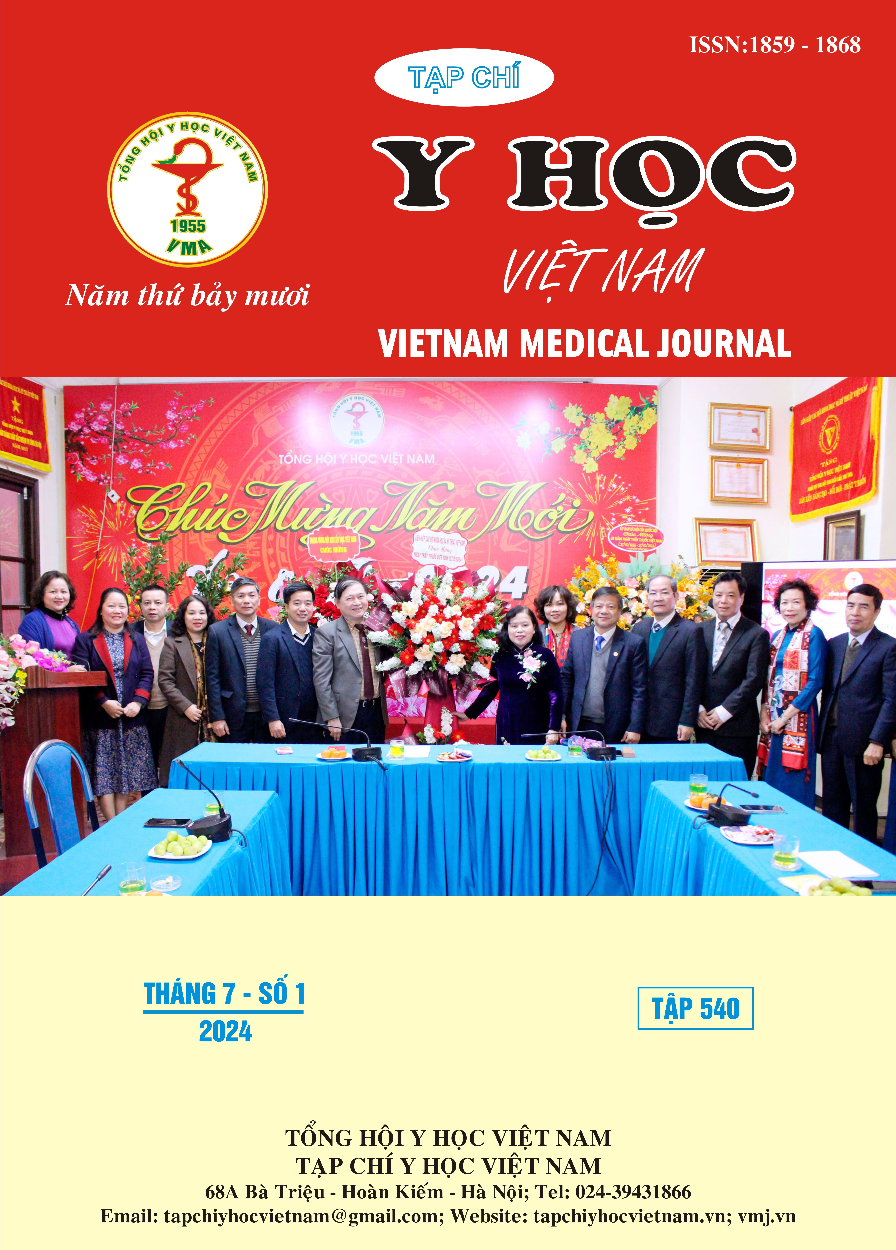NON-SURGICAL TREATMENT OF MANDIBULAR CONDYLAR FRACTURE
Main Article Content
Abstract
Objectives: To describe the clinical and radiographic characteristics of patients with condylar fractures treated conservatively at Viet Duc Univesity Hospital and the treatment outcomes of this patient group. Methods: Patients with condylar fractures treated conservatively at Viet Duc University Hospital from 2021 to 2023 were included in the study. The study employed a descriptive prospective cross-sectional approach. Results: The male proportion was 74,7%, most patients are under 40 years old and traffic accidents accounted for 93% of total cases. Most patients had fractures at the condylar head (43,9%) and lost vertical apposition (66,7%). After 3 months post-surgery or later, 95,3% of patients reported no pain, 11,6% of patients had a maximum mouth opening less than 30 mm. Successful treatment of non-displaced and partially displaced mandibular condyle fractures (70% and 83.3%) Successful treatment of complete vertical appositionand and partial vertical appositionand mandibular condyle fractures (70% and 83.3%) is high. Conclusions: Condylar fractures occurred more frequently in males than females, primarily due to traffic accidents. The primary location for condylar fractures was at the condylar head. Closed reduction for complete vertical appositionand and partial vertical appositionand mandibular condyle fractures was a simple and easily implementable method, yielding good treatment outcomes
Article Details
Keywords
Condylar fracture, conservative treatment, mouth opening
References
2. Afrooz PN, Bykowski MR, James IB et al (2015). The Epidemiology of Mandibular Fractures in the United States, Part 1: A Review of 13,142 Cases from the US National Trauma Data Bank. J Oral Maxillofac Surg, 73(12), 2361-6.
3. Valiati R, Ibrahim D, Abreu ME et al (2008). The treatment of condylar fractures: to open or not to open? A critical review of this controversy. Int J Med Sci, 5(6), 313-8.
4. Bos RR, Ward Booth RP, de Bont LG (1999). Mandibular condyle fractures: a consensus. Br J Oral Maxillofac Surg, 37(2), 87-9.
5. Nguyễn Hùng Thắng, Nguyễn Anh Tú (2019). Nhận xét đặc điểm lâm sàng gãy lồi cầu xương hàm dưới tại bệnh viện quân y 103. Tạp chí Y - Dược học Quân sự, 6.
6. Nguyễn Hoàng Cương, Vũ Trung Trực, Nguyễn Hồng Hà (2016). Nhận xét kết quả điều trị gãy lồi cầu xương hàm dưới tại bệnh viện Việt Đức. Y học Việt Nam, tập 446 số chuyên đề, tr 246-253.
7. Vanpoecke J, Dubron K, Politis C (2020). Condylar Fractures: An Argument for Conservative Treatment. Craniomaxillofac Trauma Reconstr, 13(1), 23-31.
8. Rutges JP, Kruizinga EH, Rosenberg A et al (2007). Functional results after conservative treatment of fractures of the mandibular condyle. Br J Oral Maxillofac Surg, 45(1), 30-4.


